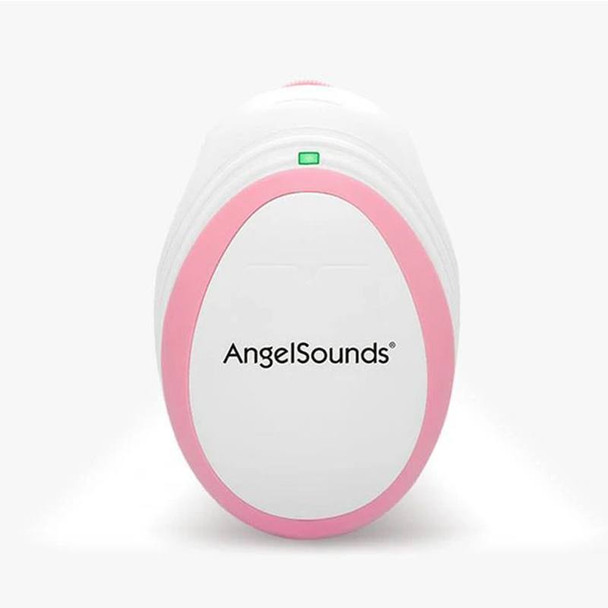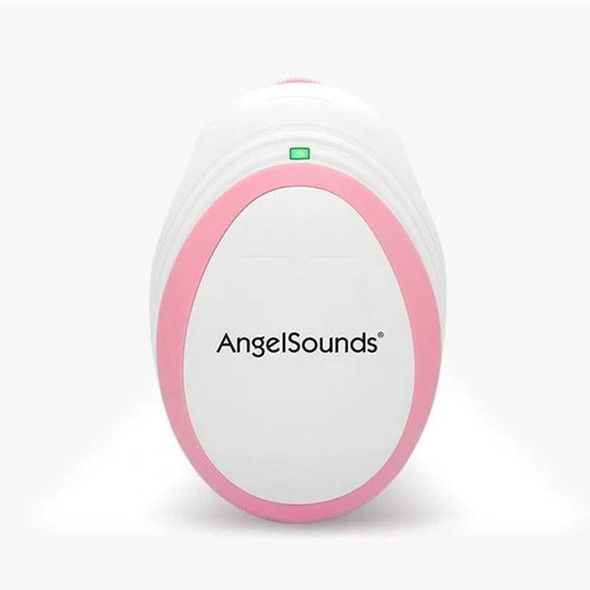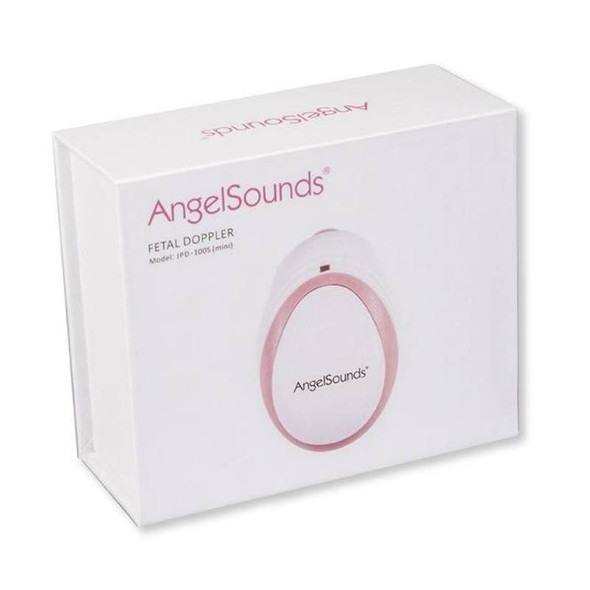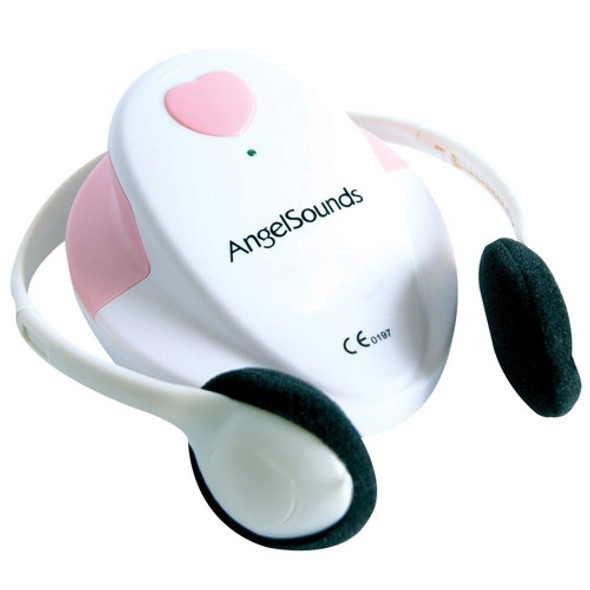Can’t wait to hear that little heartbeat? This portable fetal doppler detects the fetal heart rate quickly, from about 12-16 weeks’ gestation or later, and it's safe and simple to use. This doppler has been designed to be small and lightweight yet robust, making it ideal for midwives, doctors and, of course, pregnant women. You can safely listen to the prenatal sounds and monitor the heartbeat of your unborn baby anytime, and in the comfort and privacy of your own home.
Key Features:
- Provides peace of mind, reassurance and happiness to mums, partners and family.
- Detects baby heart rate from 12 - 16 weeks.
- Used to detect the fetal heartbeat rate (FHR) and the sound of the fetal heartbeat.
- Headphones & 9V battery included.
- Conforms to all the necessary EU Safety Standards and Regulations and has been awarded certificates from these bodies (EC Directive 93/42/EC).
- CE approved.
Box Contains:
- 1 x Fetal Doppler (includes battery)
- 1 x Headset
- 1 x Instruction Manual
- 1x Free Ultrasound Gel
How to use:
- Switch on AngelSounds and put the headphones on.
- Apply some gel to your belly and the ultrasound probe.
- Place the probe on your belly and slowly direct it to the correct location.
- Move the probe back and forth until you receive a good signal.
- Plug a second pair of headphones in and share this indescribable experience with your partner, your family and friends!
- Note: Make sure that all components are properly connected and that the battery is fully charged.
Related Products:
- More Ultrasound Gel can be found on our site. so you can listen again and again.
Featured Review:
Great ⭐⭐⭐⭐⭐
"Delighted with my purchase. Was lovely to listen to the babies heartbeat, so comforting and it was great that everyone at home could have a listen too. - Ciara
FAQ
Q: Can this heartbeat doppler be used on any heart?
A: Yes. The primary function of this doppler is to be able to listen to a baby's heartbeat, but users can still use it to listen to the heart of a child or adult as well.
Frequently Asked Questions
Is the AngelSounds Fetal Doppler safe for both mother and baby?
Yes, the AngelSounds Fetal Doppler is designed with safety in mind. It conforms to the EC Directive 93/42/EEC concerning medical devices and is CE approved, ensuring it meets stringent safety standards. Additionally, the device operates with an ultrasonic output intensity of less than 10mW/cm², which is considered safe for both mother and fetus.
At what stage of pregnancy can I start using the AngelSounds Fetal Doppler?
The AngelSounds Fetal Doppler is typically effective from the 12th to 16th week of pregnancy. However, the exact timing can vary depending on factors such as the position of the fetus and the mother's body type. It's important to note that detecting the fetal heartbeat may be challenging before the 12th week.
Can I record my baby's heartbeat using the AngelSounds Fetal Doppler?
Yes, the AngelSounds Fetal Doppler includes a recording cable that allows you to record your baby's heartbeat as an MP3 or WAV file. This feature enables you to share the recordings with family and friends or keep them as cherished memories.
Do I need to use ultrasound gel with the AngelSounds Fetal Doppler?
While the AngelSounds Fetal Doppler can function without ultrasound gel, using a coupling agent like ultrasound gel, baby oil, or water can enhance the clarity of the heartbeat sounds. Applying a small amount to your abdomen and the device's probe can improve signal quality.
How do I properly use the AngelSounds Fetal Doppler to detect my baby's heartbeat?
To use the AngelSounds Fetal Doppler:
- Insert the headset jack securely into the device.
- Apply a small amount of ultrasound gel to your abdomen.
- Turn on the device using the power/volume button.
- Place the probe on your abdomen and move it slowly until you detect the heartbeat, which may sound like galloping horses.
Ensure all components are properly connected and the battery is fully charged for optimal performance.
What should I do if I cannot detect my baby's heartbeat with the AngelSounds Fetal Doppler?
If you're unable to detect the heartbeat:
- Ensure you're using the device between the 12th and 16th weeks of pregnancy, as earlier detection may be challenging.
- Check that the battery is fully charged and all components are properly connected.
- Apply a sufficient amount of ultrasound gel to improve signal quality.
- Try repositioning the probe slowly across your abdomen, as the fetus's position can affect detection.
If you still cannot detect the heartbeat, consult your healthcare provider for further evaluation.
Is the AngelSounds Fetal Doppler suitable for professional use by healthcare providers?
Yes, the AngelSounds Fetal Doppler is designed to be small, lightweight, and robust, making it ideal for use by midwives, doctors, and other healthcare professionals. Its portability and ease of use allow for convenient monitoring of fetal heartbeats in various settings. (inhealth.ie)
What certifications does the AngelSounds Fetal Doppler have?
The AngelSounds Fetal Doppler conforms to the EC Directive 93/42/EEC concerning medical devices and has been awarded certificates from these bodies. It is also CE approved, indicating compliance with European health, safety, and environmental protection standards.
Can I use the AngelSounds Fetal Doppler to listen to my own heartbeat?
Yes, while the primary function of the AngelSounds Fetal Doppler is to detect fetal heartbeats, it can also be used to listen to the heartbeats of children or adults, including your own.
How should I maintain and clean the AngelSounds Fetal Doppler?
To maintain the device:
- Wipe the instrument case with a cloth dampened in soap or a detergent solution, then dry with a clean cloth.
- If soiled, clean as above, then disinfect by wiping with an alcohol-impregnated cloth (70% ethanol or isopropyl).
- Avoid using abrasive cleaners or immersing the device in liquids.
Regular maintenance ensures the device's longevity and optimal performance.

























